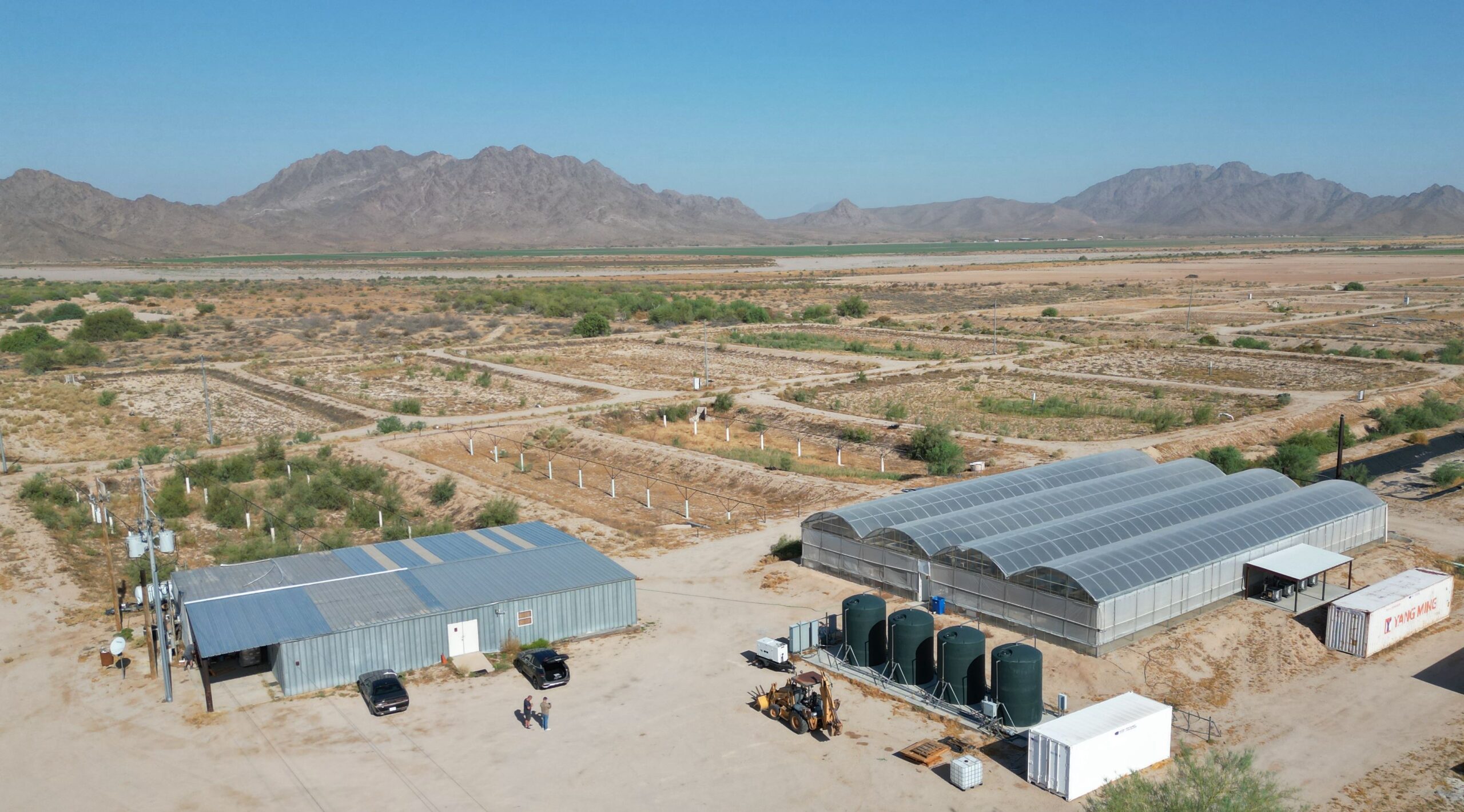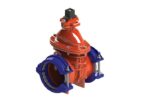
Bill Decker, vice president of water and wastewater treatment technologies, Fuel Tech Inc.
After the successful aquaculture pilot of its innovative gas infusion technology for water and wastewater treatment, Fuel Tech Inc’s vice president for water and wastewater technologies Bill Decker, gave us an exclusive Q&A. He discussed the pilot’s success, the lessons learned, and how the technology can advance in 2024.
Can you give an overview of Fuel Tech’s dissolved gas infusion (DGI) technology and how it was applied in the recent pilot trial at Royal Caridea aquaculture farm in Arizona, US?
The DGI technology injects a highly oxygen-enriched stream of water into a receiving body of water to be treated. This both raises and then maintains a higher dissolved oxygen level.
This works by taking a small slip stream of water and, using the principles of a plunging jet, injecting it through a pressurized field of pure oxygen inside a saturation vessel. By using the turbulence of the plunging jet, combined with the operation of the saturation vessel at pressures near 300 psi, we can achieve dissolved oxygen levels of up to 900 mg/l at efficiencies greater than 95 per cent depending on the pressure and temperature.
The super-saturated water is then discharged from the saturation vessel back into the receiving body of water through patent pending channel injectors that are scientifically designed to release the pressure in a way that avoids or minimizes the formation of bubbles. Without bubbles, the oxygen is transferred as molecularly dissolved oxygen which is immediately available to the aquatic life. In this particular trial, the DGI technology was being tested as a novel solution to provide oxygen on demand at Royal Caridea’s land-based shrimp farm in Arizona.
In what ways does your DGI technology differ from traditional methods used in aquaculture and what advantages does it offer?
Conventional technologies used in aquaculture traditionally use air as the oxygen source and these technologies generally cannot raise the dissolved oxygen level above saturation. Additionally, when the oxygen is in the form of an air bubble, it has two distinct disadvantages. First, the concentration of oxygen within the bubble is below 20 percent and the bubble will rise to the surface and pop prior to all the oxygen being transferred into the water. The DGI technology transfers dissolved oxygen without making bubbles. This is significant in that oxygen is then immediately available for the animals and the level of dissolved oxygen may be dialed into a small range above or below saturation as determined by the individual circumstances.
What were the primary objectives of conducting the pilot trial?
The primary objective of the pilot trial was to determine the effects of raising Pacific Whiteleg shrimp (penaeus vannamei) in low salinity water with dissolved oxygen levels at or slightly above saturation using our DGI technology. Specific attention was given to the quality of the final product, in terms of the size and taste of the shrimp, along with other indicators such as stocking level, food conversion ratio, and mortality.
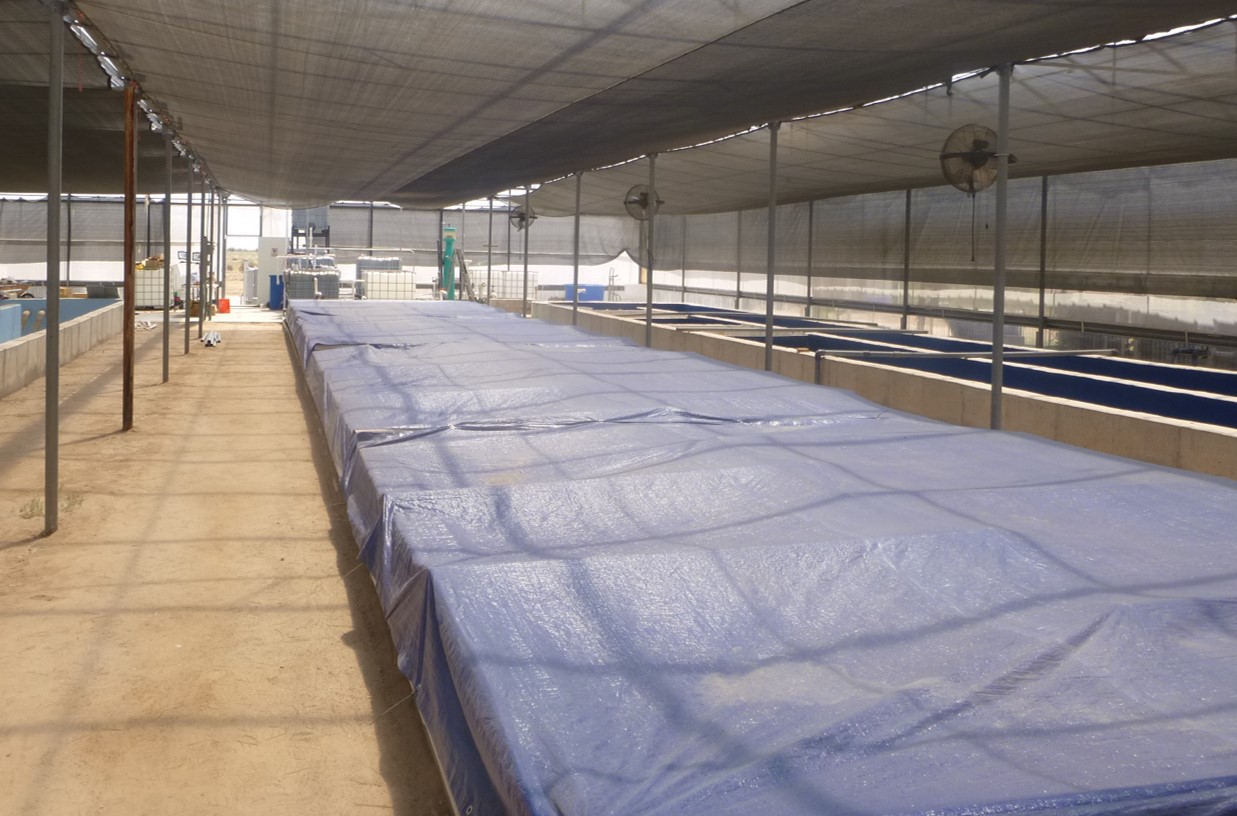
Royal Caridea shrimp farm warehouse interior
How did the DGI technology impact the aquaculture system and/or growth of the prawns? Can you share any specific results or outcomes that were achieved?
Royal Caridea wanted a harvest size of 39 grams for each shrimp. To reach this size, the typical growing cycle for post larvae shrimp ranges from 90 to 120 days (about 4 months). Through using our DGI technology, the final harvest at Royal Caridea was at approximately day 104 with the shrimp exceeding growth targets with some as large as 59 grams.
Some prior studies reported that exposing the shrimp to higher levels of dissolved oxygen could negatively affect the taste and survivability, but this trial showed the opposite to be true. As part of the trial, we worked with a local chef who gave valuable feedback that the fresh shrimp had an exceptional flavor and exceeded all expectations for taste, texture, and freshness.
What’s more, the shrimps had no detectable trimethyl amines (TMA), which is the chemical responsible for the pungent odor given off by fish and seafood, and there was no evidence of shrimp mortality due to loss of oxygen. Royal Caridea has concluded the DGI system providing oxygen-on-demand allowed higher stocking density and a superior shrimp growth cycle.
What challenges or obstacles did you encounter while implementing the DGI technology and how were they addressed?
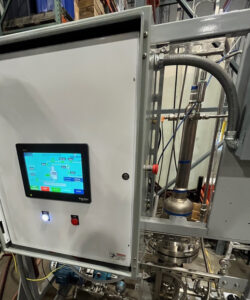
DGI installation panel view at Royal Caridea
The first major challenges were the environmental conditions in which the pilot was conducted. It took place in late summer inside an Arizona greenhouse where daytime temperatures inside the greenhouse exceeded 120 degrees Fahrenheit (49 degrees Celsius). While the equipment was built for a wide temperature range, adaptations were needed to be made to cool the control panel.
A second challenge was the remote farm location relative to the location of our field team. Shrimp are very sensitive to disruptions in the dissolved oxygen level and can die very quickly when the dissolved oxygen levels drop too low. Redundant dissolved oxygen sensors were employed to ensure accurate measurement which was relayed to a team monitoring the operation. In the later stages of the growing cycle, when oxygen demand is at its peak, this team was expanded to ensure no disruption of the oxygen supply due to a mechanical issue.
The third, and perhaps most challenging, issue that came up was trying to estimate the amount of oxygen required to maintain the targeted dissolved oxygen levels. The system was designed to turn on when the level fell below 9 mg/l and turn off when the level rose above 10.5 mg/l.
On the oxygen consumption side, oxygen is used by the shrimp, by the other biological matter in the water, by the nitrification and dentification process and, finally, a very small percentage is transferred from the water back into the atmosphere. During the early stages of the growth cycle, this on/off operation was a predictable cycle. However, in later stages of the pilot, the oxygen demand rose above our initial estimate and above the initial capacity of the pilot unit. When this occurred, we either needed to reduce the oxygen demand or increase the dissolved oxygen supply.
Reducing the demand could be done by selectively harvesting shrimp early which would mean a a lower weight and profit, losing shrimp due to lack of oxygen, or potentially removing some other biological demands. Rather than looking at reducing the oxygen demand, we elected to increase the output and modify the DGI equipment to increase the flow through the saturator vessel. This required changing the plunging jet nozzle and increasing the pump size – allowing us to operate the pilot at a significantly increased oxygen output.
Were there any lessons learned or key insights gained from this pilot trial that might influence future applications of DGI in similar environments?
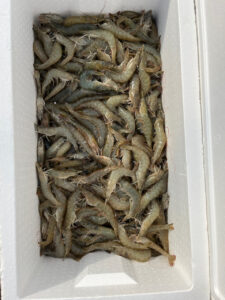
Shrimp harvest after DGI use
It is common knowledge within the aquaculture industry and beyond that oceans have been overfished and a changing climate continues to affect ocean harvests. Sustainable solutions, such as land-based aquaculture systems, offer better choices to ensure food supplies are able to meet future challenges. By supplying oxygen-on-demand, the DGI technology offers commercial shrimp and fish farms a robust and reliable solution that can be easily deployed in a recirculating aquaculture system.
The DGI technology is flexible in terms of oxygen production, highly responsive to changes in the dissolved oxygen level, and has built-in reliability. As more supplies of seafood are shifted to these sustainable land-based aquaculture farms, where the entire harvest can be quickly affected by changes in variables, farm operators need solutions that deliver increases in production yield with minimal risk.
Bill Decker and the team at Royal Caridea will be presenting the results of the DGI aquaculture pilot at Aquaculture America February 18 – February 21, 2024, in San Antonio, Texas, in anticipation of the release of an industry white paper later in the year.



